HPCAP - combining AFM and capillary technology to push additive electronics to submicron resolution
This article discusses how HPCAP technology - inspired by AFM technology and capillary motion- enables additive and digital manufacturing of electronics with unprecedent resolution for application in semiconductor packaging, printed electronics, AR/VR, microLEDs, and beyond.
This article was first published on
www.techblick.comThis article is written by Sahar Al Kamand at Hummink as part of the TechBlick series on additive electronics.
The Motivation Behind HPCAP
The evolution of printing technologies has always been driven by an important factor: increasing precision while diversifying applications. To accomplish this, HPCAP (High Precision Capillary Printing) developed by Hummink emerges as a groundbreaking technology that leverages the power of capillary forces and resonance without the need for other external factors reaching high resolutions and expanding the applications.
Introducing HPCAP
Drawing inspiration from Atomic Force Microscopy (AFM), HPCAP employs a macro-resonator as its primary sensing mechanism to provide feedback during contact and printing processes. What sets this technology apart is its exclusive reliance on capillary forces and resonance as the sole driving forces for printing, completely devoid of UV, laser, or pressure-based dispensing mechanisms. This mechanism employs a glass pipette, filled with various inks, as its printing tip. Its precise control mechanism and compatibility with a wide array of inks make it a promising solution for several high-resolution applications reaching as fine as 100 nanometers. In a way, it can be compared to the world's smallest fountain pen, enabling precision printing on a sub-micron scale.
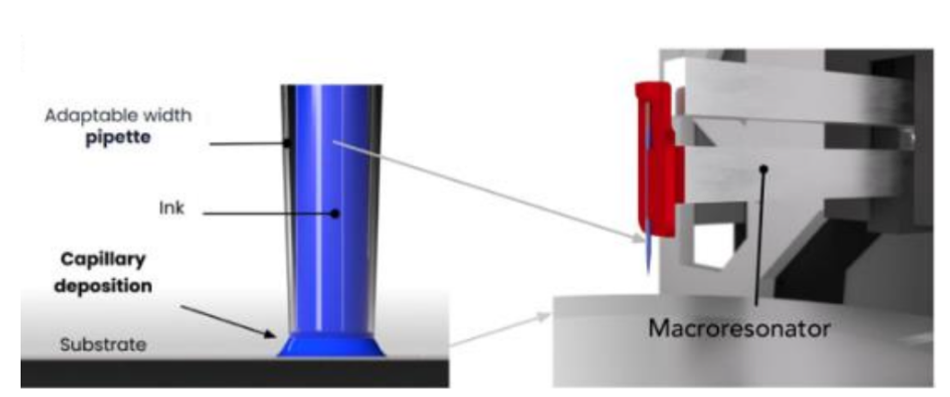
How Does it Work?
A macro-resonator (or tuning fork) oscillating at a resonance frequency of about 1 kHz is attached to a mechanical bridge. The oscillation is generated by a piezodither that excites the macro-resonator. The bridge, driven by a piezostage, allows the resonator to move with a 5 nm precision in Z axis (Z-fine). State-of-the-art electronics are used to control the resonance of the macro-resonator through three different parameters: the resonance phase, amplitude, and frequency. Any shift in these values can be controlled to achieve different printing features, indirectly modifying the print geometry (thickness, line width...). Amplitude can be adjusted between 5 nm and 100 nm, and any frequency shift of 100 mHz or more can be accurately detected. A glass pipette is attached to the extremity of the macro-resonator, and oscillates in phase with the latter. This pipette is made of a pulled glass capillary; and despite its fragility, the real-time detection of interaction between the substrate and the pipette avoids any uncontrolled damage to both the substrate and the pipette, while maintaining a high-quality dispensing mechanism. By controlling the pulling parameters (heat, force etc...), a wide range of pipette diameter can be achieved, from 100 nm to 50 μm. The pipette can be filled with various inks. Pipettes are typically filled with a few tens of microliters. Since the dispensed volume is in the nanoliter range (orders of magnitude lower than the pipette volume), a single pipette can print up to hundreds of kilometers, depending on the dispensing diameter.
The figures below show that the first step of the HPCAP printing process is to approach the tip to the substrate surface. As the macro-resonator is oscillating at its proper resonance frequency, a slight change of a few hundreds of mHz can be observed once a small meniscus is formed between the ink inside the pipette and the substrate. The formed meniscus is stabilized by the macroresonator's oscillation, and this frequency shift is then locked by the electronic feedback loop. After this initial step, capillary printing can be achieved by moving the substrate in the XY axis. As the frequency shift value must remain constant, the Z-fine bridge will move the resonator (hence the pipette) in the Z direction to perfectly follow the topography of the substrate, while allowing continuous deposition. As explained earlier, the only driving force for printing is the capillary force and the resonance of the macro-resonator.

Save the Date for The Future of Electronics RESHAPED show in Boston and Berlin

HPCAP Stands Out:
Unlike inkjet printing technologies, HPCAP is not a drop-on-demand technology. It ensures the continuous printing of any ink on any substrate, without the characteristic defects that can be observed with inkjet printing. Other technologies rely on electric field (EHD) or pressure (robocasting) as a driving force for printing. However, most of these technologies struggle with sub-micronic resolutions and precisions, as the required external energy for dispensing/extruding dramatically increases with smaller printing dimensions. This can be explained by the increased pressure drop as described by the Hagen-Poiseuille equation. For HPCAP technology, the ink is not pushed from the inside of the pipette, but rather pulled by the substrate from the outside, with the pressure drop governed by the Laplace- Young equation. Though both these equations are a simplification of the underlying mechanisms behind ink dispensing through narrow channels, they provide an understanding of the differences in required printing forces between pressure driven (where dp scales with 1/𝑅4) and capillarity (where dp scale with 1/𝑅 ). The strength of capillary forces at these resolutions allows HPCAP to dispense at submicronic resolutions and with high viscosity materials.

Hagen-Poiseuille Equation. Where ∆𝑃 is the pressure drop, 𝜂 is the dynamic viscosity, L is the significant length of the channel, Q the volumetric flow rate, and R the pipette radius.

Laplace-Young Equation. where 𝛾 is the surface tension of the fluid, and R the pipette radius.
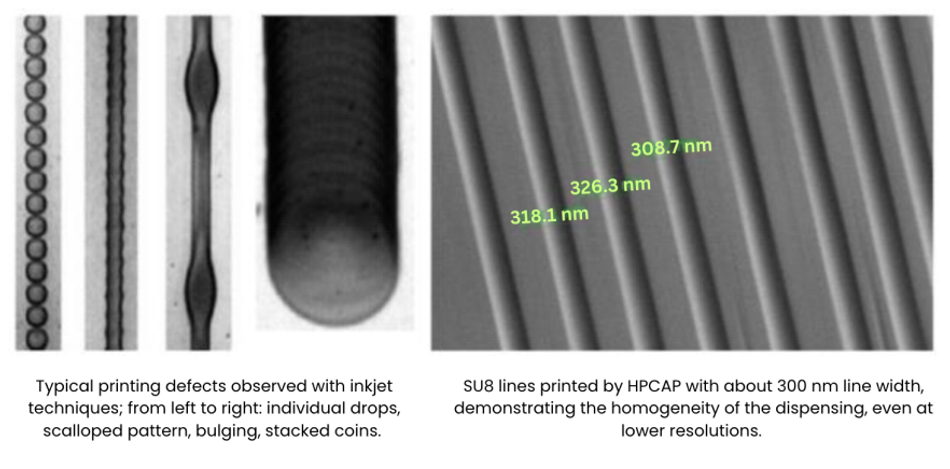
HPCAP Applications:
Since HPCAP does not need an external source of energy, it is thus unlike other additive manufacturing technologies that use laser or UV for instance not limited to photosensitive material. Polymers (PMMA, SU8, PVP, epoxy...), conductive inks (silver, copper, gold...), 2D materials (nanowires, graphene) with viscosities up to 100,000 cP have been successfully printed using HPCAP technology. With a few adjustments in rheological, capillary, and colloidal properties, any ink can be printed, and any material is potentially processable. This strong versatility allows HPCAP technology to address a broad range of applications where high precision and resolution are required.
High resolution interconnects and repair for semiconductor and display applications
One of the major applications for HPCAP technology is the dispensing of conductive inks for complex and high- resolution interconnections. The figure below (a, b, and d) shows SEM images of printed examples for such applications. All results were obtained with Hummink manufactured silver ink. A and b in the figure show examples of printed lines used in the repair of open circuit defects in display and packaging and Image d in the figure demonstrates 3D packaging capabilities of HPCAP technology by printing high aspect ratio conductive pillars.
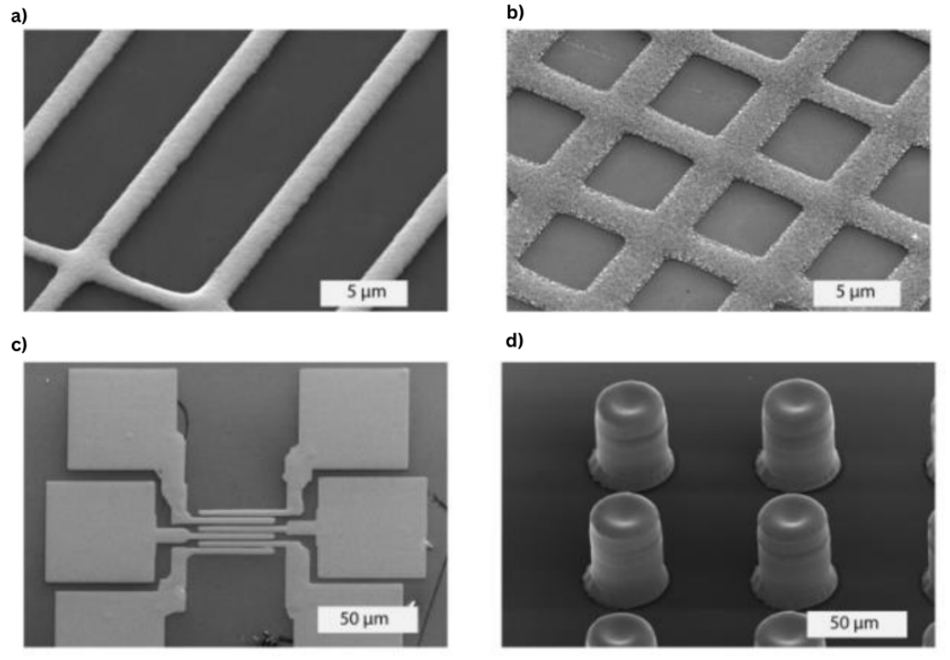
Printed Biosensors
Fully printed biosensors have gained increasing attention for the past years because of their cost efficiency, design versatility, and possible enhanced performances. As a technology capable of depositing a wide range of active material, such as conductive inks or biomaterials, HPCAP has been used in collaboration with renown labs to demonstrate its ability to print fully functional biosensors. The figure below shows a functional biosensing device printed with HPCAP technology. Gap reduction between electrodes has been a major challenge for fully printed electrodes. It has several positive impacts :
- It increases the field effect, hence improving the sensitivity of the biosensors
- at comparable field effect and sensitivity, it reduces the energy consumption of biosensors
- with adjusted geometries, selectivity of the biosensors can also be adjusted
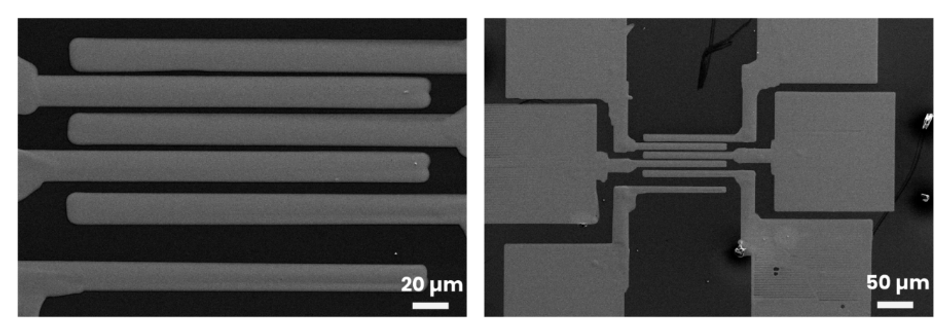

Save the Date for The Future of Electronics RESHAPED show in Boston and Berlin
Watchmaking
Luxury watchmaking predominantly revolves around the production of high-quality, upscale products. The dials of these watches, which are often the centerpieces of their design, are meticulously crafted using expensive, delicate, and fragile materials. The intricate topography of watch dials, as depicted in Figure below has posed challenges for traditional inkjet printing techniques, preventing them from achieving the desired high-resolution decorations. Additionally, newer printing technologies that rely on external energy sources have often been too aggressive, posing significant risks to these delicate substrates.However, as discussed in the prior section, the innovative HPCAP technology offers a solution. It incorporates real- time detection of the interaction between the pipette and the substrate, ensuring no harm comes to the latter. Notably, HPCAP's capabilities extend beyond mere decoration. It can dispense a variety of inks—from precious metals and quantum dots for ornamental purposes to functional materials like resins and glues. Given these attributes, HPCAP is being closely examined as a viable technology for both functionalizing and personalizing watch dials.
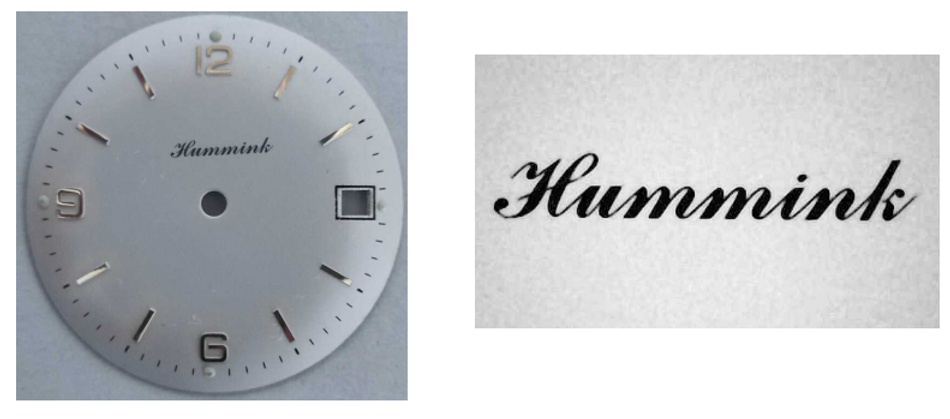
Conclusion:
HPCAP technology stands out in the landscape of printing technologies, offering a unique approach that shuns conventional energy sources, relying solely on capillary forces and resonance. Its incredible precision is exemplified by its ability to navigate the Z-axis with a 5 nm accuracy. The versatility of HPCAP is evident in its compatibility with numerous inks, irrespective of their viscosity. This versatility offers a broad spectrum of applications, from the high-stakes realm of semiconductor repair to the intricate world of watchmaking and decoration. As industries continue to demand higher precision and versatility in printing, HPCAP provides a forward-looking solution that is poised to redefine the standards of the printing world.

Save the Date for The Future of Electronics RESHAPED show in Boston and Berlin
This article originally appeared here
